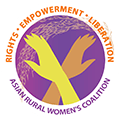PAN Asia Pacific (PANAP) Briefing
Rotterdam Convention Conference of Parties
Geneva, 24 April – 5 May, 2017
The 8th Conference of Parties will consider, amongst other things:
- the listing for 5 pesticides
- a proposal for an amendment to the Convention on listing
- the proposal for a compliance procedure
In summary:
- all pesticides meet the requirements of the Convention and inclusion in Annex III should proceed
- amending the convention to remove the need for consensus on listing of chemicals is appropriate. The Rotterdam Convention is for information sharing (not a global ban). Once a pesticide or chemical is listed in the Rotterdam Convention, developing countries can ask the Secretariat for support to build their capacity to review this pesticide in their countries.
- the compliance procedure should be adopted (even if the bracketed texts are not included it should be adopted). A very useful procedure for ensuring the effectiveness of the Rotterdam Convention.
1. Fenthion Severely Hazardous Pesticide Formulation (SHPF) – ultra low volume (ULV) formulations at or above 640 g active ingredient/L
Documents: UNEP/FAO/RC/COP.8/8; UNEP/FAO/RC/COP.8/8/Add.1
- The SHPF was proposed by Chad because of adverse occupation health impacts.
- CRC 9 concluded, on the basis of information provided by Chad and additional information collected by the secretariat, that the criteria of the Convention were met.
- CRC 9 recommended listing SHPF Fenthion > 640g/L.
- The Decision Guidance Document (DGD) was provided in UNEP/FAO/RC/COP.7/8/Add.1.
- COP 7 did not reach consensus – 1 country opposed listing for a reason not consistent with the Convention (e.g. they wanted to keep using it).
- Listing would not stop any country using fenthion if they wish to.
- Listing would enable the provision of technical assistance to those countries that wish to stop using it.
- The criteria of the Convention are met and the COP 8 should agree to listing.
2. Trichlorfon
Documents: UNEP/FAO/RC/COP.8/9; UNEP/FAO/RC/COP.8/9Add.1
- Final regulatory action was taken by Brazil and European Union for health (Brazil and EU) and environmental (EU) reasons.
- CRC 8 concluded, on the basis of information provided by Brazil and EU that the criteria of the Convention were met.
- CRC 8 recommended listing the active ingredient trichlorfon.
- The Decision Guidance Document (DGD) was provided in UNEP/FAO/RC/COP.7/9/Add.1.
- COP 7 did not reach consensus – 2 countries opposed listing.
- The criteria of the Convention are met and the COP 8 should agree to listing.
- Listing would not stop any country using trichlorfon if they wish to.
- Listing would enable the provision of technical assistance to those countries that wish to stop using it.
3. Paraquat SHPF – liquid formulations (emulsifiable concentrate and soluble concentrate) containing paraquat dichloride at or above 276 g/L, corresponding to paraquat ion at or above 200 g/L
Documents: UNEP/FAO/RC/COP.8/10; UNEP/FAO/RC/COP.8/10Add.1
- The SHPF was proposed by Burkina Faso because it was found to cause human health problems to the applicators under conditions of use in Burkina Faso, referring to 53 occupational incidences between 1996 and 2010.
- CRC 7 concluded, on the basis of information provided by Burkina Faso and additional information collected by the secretariat, that the criteria of the Convention were met.
- CRC 7 recommended listing the paraquat SHPF.
- The Decision Guidance Document (DGD) was provided in UNEP/FAO/RC/COP.6/11/Add.1.
- COP 6 did not reach consensus – 4 countries opposed listing for reasons not consistent with the Convention (e.g. they wanted to keep trading and/or using it)
- COP 7 did not reach consensus – 3 countries opposed listing for reasons not consistent with the Convention (e.g. they wanted to keep trading and/or using it)
- Listing would not stop any country using paraquat SHPF if they wish to.
- Listing would enable the provision of technical assistance to those countries that wish to stop using it.
- The criteria of the Convention are met and the COP should agree to listing.
4. Carbofuran
Documents: UNEP/FAO/RC/COP.8/14; UNEP/FAO/RC/COP.8/14Add.1
UNEP/FAO/RC/COP.8/INF/16; UNEP/FAO/RC/COP.8/INF/16
- Final regulatory action was taken by European Union, Canada and seven African parties – Cabo Verde, Chad, the Gambia, Mauritania, the Niger, Senegal and Toga – for reasons of human health and the environment. These included:
- EU – concern about the acute exposure of vulnerable groups of consumers, in particular children, risk of groundwater contamination and risks to birds and mammals, aquatic organisms, bees, non-target arthropods, earthworms, and soil non-target organisms;
- Canada – unacceptable risk to workers conducting certain mixing, loading, applying or post-application activities, unacceptable risk from residues in food and drinking water, unacceptable risk to terrestrial and aquatic organisms, 33 environmental incident reports from US and Canada of avian, small wild mammal and bee mortality;
- 8 African countries – fragile ecology of CILSS, non-compliance with recommended measures for a safe use of carbofuran by users in the context of CILSS countries; residues in harvested crops and the behaviour of local people make the risk unacceptable, high toxicity to birds and fish.
- CRC 11 concluded, on the basis of information provided by the countries that the criteria of the Convention were met.
- CRC 11 recommended listing the active ingredient carbofuran.
- Listing would not stop any country using carbofuran if they wish to.
- Listing would enable the provision of technical assistance to those countries that wish to stop using it.
- The criteria of the Convention are met and the COP should agree to listing.
5. Carbosulfan
Documents: UNEP/FAO/RC/COP.8/15; UNEP/FAO/RC/COP.8/15Add.1;
UNEP/FAO/RC/COP.8/INF/18; UNEP/FAO/RC/COP.8/INF/19
- Final regulatory action was taken by European Union and eight African parties – Burkina Faso, Cabo Verde, Chad, the Gambia, Mauritania, the Niger, Senegal and Togo – for reasons of human health and the environment. Concerns included:
- EU – possible genotoxicity of metabolites, carcinogenicity of impurities, possible exceedance of the Acceptable Daily Intake by toddlers; risk to groundwater, and potential risks to birds and mammals, aquatic organisms, bees and earthworms; and an acute risk to children and adults from consumption of a number of crops;
- African countries – risk to human health through water contamination and high toxicity to birds, bees, fish and aquatic organisms.
- CRC 11 concluded, on the basis of information provided by the countries that the criteria of the Convention were met.
- CRC 11 recommended listing the active ingredient carbosulfan.
- Listing would not stop any country using carbosulfan if they wish to.
- Listing would enable the provision of technical assistance to those countries that wish to stop using it.
- The criteria of the Convention are met and the COP should agree to listing carbosulfan.
6. Amendment to Article xxii
Documents: UNEP/FAO/RC/COP.8/16; UNEP/FAO/RC/COP.8/16Add.1 and UNEP/FAO/RC/COP.8/INF/40
- COP 7, decision RC-7/5, decided to undertake intersessional work on the process of listing chemicals in Annex III
- As a result of that intersessional work a number of countries have proposed an amendment to Article 22, to delete sub-article 5 which requires consensus for listing. This would bring the Rotterdam Convention into line with the Stockholm and Basel Conventions, and limit the ability of 1 country or a small number, to prevent listing for spurious reasons, as is currently the case.
- The amendments are brought by the African countries.
7. Compliance
Documents: UNEP/FAO/RC/COP.8/18
- Article 17 provides for the development and approval of procedures and institutional mechanisms for determining non-compliance with the provisions of the Convention and for the treatment of Parties found to be in non-compliance.
- All 7 COPs have considered this issue.
- Text developed at COP 7 is provided.
- A few square brackets remain to be agreed.








Discussion about this post